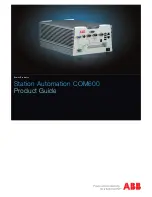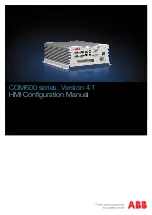
11
I-WLAN
183
Certificates with I-WLAN
In
I
‐
WLAN
scenarios,
certificates
are
used
so
that
the
roaming
clients
can
authenticate
the
SEG
when
communications
are
established.
This
can
involve
certificate
chains
so
any
intermediate
certificates
that
are
required
to
complete
the
validation
chain
should
be
uploaded
to
the
SEG.
There
is
no
requirement
for
the
client
to
contact
a
CA
server
as
a
Certificate
Revocation
List
(CRL)
is
not
used.
Authentication
of
the
security
gateway
occurs
as
follows:
•
The
connecting
client
calculates
and
sends
a
hash
of
its
root
certificate
to
the
SEG.
At
this
point
the
client
only
has
a
CA
signed
root
certificate.
•
Using
the
hash,
the
SEG
scans
all
the
certificates
used
with
its
IPsec
tunnels
until
it
finds
a
host
certificate
that
can
be
validated
by
the
client.
•
This
certificate
is
now
sent
to
the
client
and
is
also
referred
to
as
the
Host
Certificate
.
Any
intermediate
certificates
that
are
needed
to
form
a
chain
between
the
host
certificate
and
the
client's
root
certificate
are
also
sent.
•
The
client
then
authenticates
the
sender
by
creating
a
signing
chain
to
its
own
CA
signed
root
certificate.
The
use
of
intermediate
certificates
in
these
steps
means
that
it
will
always
be
possible
for
a
client
to
authenticate
the
host
certificate
even
though
the
clients
root
certificate
cannot
be
changed.
Two cryptographic suites must be specified
For
proposal
lists
for
IKE
and
IPsec
with
I
‐
WLAN,
the
3GPP
standard
specifies
that
two
different
cryptographic
suites
must
be
specified
for
each.
This
means
that
the
IPsec
tunnel
IKE
and
IPsec
proposal
lists
must
each
contain
two
different
proposals
and
these
proposals
should
not
have
any
algorithms
in
common.
Recommended
algorithm
combinations
can
be
found
in
the
SEG
‐
100
Getting
Started
Guide
.
End User DNS server lookup
The
SEG
provides
an
End
User
DNS
server
address
to
clients.
This
can
either
be
received
automatically
by
the
SEG
from
the
GGSN
or
can
be
provided
manually
during
setup.
The
SEG
normally
sends
the
DNS
address
received
from
the
GGSN
but
the
option
Override
any
End
User
DNS
information
received
from
GGSN
can
be
enabled
to
override
this
behavior
so
that
the
DNS
can
be
entered
manually.
The
recommendation
is
to
use
the
end
user
DNS
received
from
the
GGSN.
















































